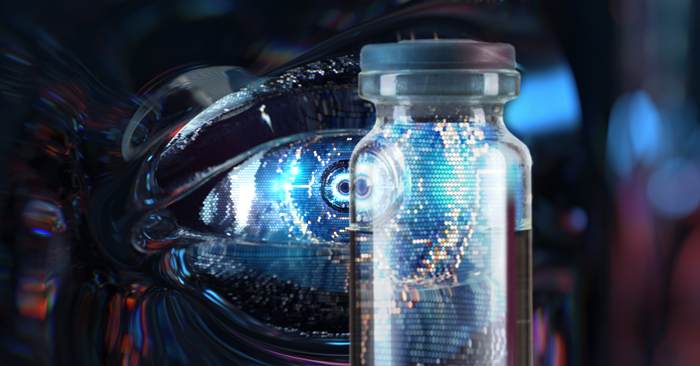Transforming Pharmaceutical Inspections with Human-Like Robot AI
 In the ever-evolving landscape of pharmaceutical manufacturing, the need for precision and efficiency in visual inspections are
paramount. GSK's latest innovation, the Human-like Vision Robot Artificial Intelligence (AI), is set to transform the industry by addressing the limitations of traditional manual and semi-automated visual inspections (MVI and SAVI).
In the ever-evolving landscape of pharmaceutical manufacturing, the need for precision and efficiency in visual inspections are
paramount. GSK's latest innovation, the Human-like Vision Robot Artificial Intelligence (AI), is set to transform the industry by addressing the limitations of traditional manual and semi-automated visual inspections (MVI and SAVI).
Current Challenges and Problem Statement
Performing visual inspections on parenteral products can be challenging, especially with difficult-to-inspect presentations. Traditional methods like MVI and SAVI often result in probabilistic detection, leading to lower speed, increased lead times and costs. Few alternatives to manual inspection are practically used for small batches or clinical phases. For larger lot sizes, recent automated visual inspection (AVI) systems, combined with AI, have shown higher detection rates. However, the second stage of inspection after AVI's first stage, typically handled by MVI or SAVI, lags with a limited detection rate, posing a two-stage process risk on efficiency and quality.
The Human-Like Vision Robot AI Solution
The Human-like Vision Robot AI aims to bridge this gap by leveraging deep learning technology to enhance defect detection rates and reduce false rejects. The objective is to design and deploy the vision robot AI that can match or exceed the performance of new AVI systems, thus eliminating the need for MVI or SAVI second-stage inspection. The system principle is to rotate the unit at any angle in front of the light and camera, mimicking the gestures of an MVI operator. This ensures a thorough inspection from all angles by using detection and combining traditional computer vision and deep learning.
There are six benefits of this innovative solution:
- Improved Defect Detection
The system rotates the unit at any angle in front of the light and camera, mimicking the gestures of a MVI operator at 360°. This ensures a thorough inspection from all angles. Also, integrating AI and deep learning models enhances defect detection capabilities. These models would be retrained over time via change control, identifying subtle defects that human operators may miss. Utilizing the same technological infrastructure for image archiving as existing AVI lines ensures seamless integration and standardization across inspection processes. - High Repeatability and Reliability
Robot precision provides high repeatability in inspection tasks, eliminating inter-operator variability and fatigue effects. This ensures consistent quality and performance. The system can operate continuously during night shifts and weekends without requiring breaks, unlike human operators who need regular eye rest and downtime. Opening time can be extended up to a 24/7 shift pattern per week. - Enhanced Efficiency
The system has an increased throughput; it can inspect units faster, reaching speeds of up to 10 units per minute, compared to the maximum of 5 units per minute by human operators. The system can sort inspected units into indexed trays (critical, major or minor) for subsequent control, streamlining the workflow and reducing manual handling. In addition, it can automatically sample units for acceptable quality level testing, ensuring compliance with quality standards. - Data and Traceability
The system can capture and save images of real defects found during production. This provides a valuable record for traceability, quality control and continuous improvement initiatives. The captured data can be analyzed to identify trends, root causes of defects and areas for process improvement. - Innovation Management and Future Vision
The project follows a structured Technology Readiness Level scale, with milestones from ideation to expected deployment. A preferred supplier has been screened, considering robotic integration capacity for critical gesture control, computer vision, AI and pharmaceutical automation.
The Human-like Inspection Robot AI will have a common platform for syringes, liquid and lyophilized vials, with multiple vision stations and robot arms for various inspection tasks. This setup allows for optimized image resolution, defect sorting and standalone operation for extended periods, including night shift inspection. - Digitalization infrastructure
The backend infrastructure includes image archiving, defect digitalization and digital twins to improve offline processes, leveraging the same technology as the digitalization AVI program.
Conclusion
The Human-like Vision Robot AI represents a significant leap forward in pharmaceutical visual inspections, promising improved accuracy, efficiency and scalability. This innovation is poised to reshape the industry, ensuring higher quality and safety standards for parenteral inspection. This project illustrates GSK's commitment to leveraging cutting-edge technology to enhance pharmaceutical manufacturing processes.



